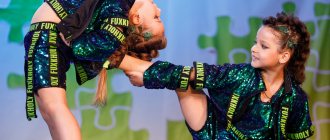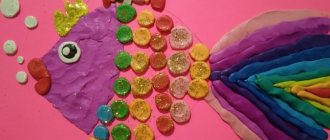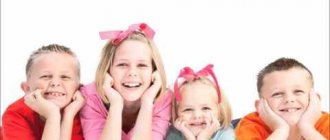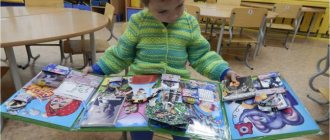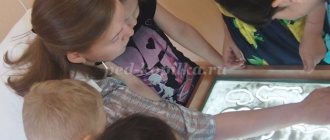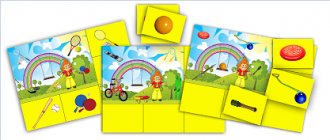Project "Fairy tale therapy"
Municipal budgetary preschool educational institution Child Development Center - kindergarten No. 5 “The Scarlet Flower”
AUTHOR'S PROJECT
USING “FAIRY TALE THERAPY” TECHNOLOGY
Performer: Musical director of MBDOU CRR - D/S No. 5 “The Scarlet Flower” Yulia Olegovna Karakulova.
Goryachy Klyuch. year 2012
CONTENT.
1 . FORMULATION OF THE PROBLEM. 3
2. STUDYING METHODOLOGICAL LITERATURE. SYSTEMATIZATION OF THE THEORY. 4
3. IMPLEMENTATION OF “FAIRY TALE THERAPY” TECHNOLOGY INTO PRACTICAL ACTIVITIES. 9
4. RESULTS OF IMPLEMENTING THE PROGRAM INTO PRACTICE. 10
LITERATURE. 12
Using the Fairytale Therapy technology in music classes.
1 . Problem formulation. Music plays a big role in the aesthetic education of a preschooler. Correctly and well-organized listening to music helps develop the child’s horizons and imagination, enriches him with a whole range of impressions, develops his hearing, musical memory, develops in children the ability to understand the content of music, its character, and promotes the development of attention and concentration. But unfortunately, some children do not listen to music attentively, are distracted while singing, do not want to study, do not have interest in musical activities, the speech of some children is not accurate and expressive enough; they cannot adequately use the means of artistic expression in their own speech creativity, and find it difficult to develop a plot when listening to musical works. The lack of rich literary and life experience limits the creative and speech capabilities of children. Preschoolers show great interest in fairy tales and perceive them meaningfully. But mostly their knowledge and impressions are based on material from television programs. Special work is needed to attract children's attention with the help of elements of fairy tales in the classroom, to develop creative storytelling skills based on familiarity with fairy tales. Participants. Children, parents, teachers. The organization of work is carried out in three directions: • Group and individual work with children. • Interaction and educational work with parents. • Collaboration of preschool teachers.
Goals. Increasing the attention and interest of children in music classes, developing positive behavior in preschoolers based on the example of positive fairy-tale characters, developing creative abilities and cognitive interest. Objectives: • Develop voluntary attention, memory, thinking, imagination, fantasy, creative abilities. • Develop the sensory-perceptual sphere, cognitive interest. • Develop speech, enrich active vocabulary. • Enrich positive emotional experiences.
Estimated results of technology implementation. • Increasing attention during music lessons. • Increased emotional responsiveness to musical works. • Enrichment of information about yourself, about nature, about the world around you, about social relationships. • Development of cognitive activity and creative abilities in children. • Children’s ability to behave in various situations, using positive experience based on the example of the behavior of fairy-tale characters. • Positive optimistic attitude towards life.
2. Study of methodological literature. Systematization of the theory.
I began my work by studying specialized literature, familiarizing myself with the works of the authors of modern programs and methods. Currently, pedagogical and psychological-pedagogical technologies for fairy tale therapy have been developed, including: Zinkevich-Evstegneeva T.D. The path to magic. Theory and practice of fairy tale therapy, Kapskaya A.Yu., Mironchik T.D. Gifts from fairies, educational fairytale therapy for children, Shorokhova O. A. Playing a fairy tale: fairytale therapy and classes for the development of coherent speech in preschoolers, etc.
Fairytale therapy is effectively used to create favorable conditions for the formation of creative personality traits. Children who are brought up on folk tales begin to speak faster, and not just give out a set of words, but express themselves in whole sentences in good literary language. By actively including fairy tales in classes with children, teachers develop imagination, logic, attention, observation, and teach children empathy. Children not only listen, but also participate in the creative process, composing their own fairy tales or inventing creative stories. Thus, fairy tales open up a wonderful world to the child. Types of fairy tales: • artistic (author's stories, wise ancient tales) • folk (with ideas of good and evil, peace, patience, striving for better) • fairy tales about animals, nature, plants, phenomena; • everyday tales; • scary tales; • magical and fantastic tales. Classification of fairy tales used in the classroom. • Didactic tales, in the form of an educational task. • Meditative tales (to relieve psycho-emotional stress). • Psychotherapeutic (to treat the soul, with the image of the main character “I”, a good wizard), children draw illustrations, make dolls and stage plays. • Psychocorrectional (for a gentle influence on the child’s behavior), we read a problematic fairy tale without discussing it, we give the child the opportunity to be alone with himself and think. According to the established tradition in literary studies, there is another division of fairy tales. These are three groups: tales about animals, fairy tales and everyday ones. • Tales about animals. Tales about animals are usually short, but meaningful, consisting of one episode or adventure. Heroes are animals whom the imagination of the people has endowed with intelligence, the gift of speech and actions similar to those of humans. Tales about animals are the spiritual heritage of the people, inherited from past eras. These tales show animal traits, but conventionally imply human traits. Animals usually do what people do, but in these fairy tales animals are similar to humans in some ways and not in others. Here the animals speak human language. The main task of these fairy tales is to ridicule bad character traits and actions and evoke compassion for the weak and offended. The most elementary and at the same time the most important ideas - about intelligence and stupidity, about cunning and straightforwardness, about good and evil, about heroism and cowardice - lie in the consciousness and determine the norms of behavior for the child. Children's fairy tales about animals touch on social and ethical issues in an interpretation that is accessible to children. • Fairy tales. In fairy tales, elements of fantasy prevail over the real depiction of life; along with people, wonderful helpers and magical objects take part in them, and unusual events occur in a fantastic setting. Fantastic images and events were determined by everyday life, tradition, science, and the peculiarities of the artistic thinking of the people. A fairy tale is a work of art with a clearly expressed idea of man's victory over the dark forces of evil. The development of action, coupled with the struggle of light and dark forces, and wonderful fiction are attractive in them. There are two groups of heroes in these fairy tales: good and evil. Usually good triumphs over evil. Fairy tales should evoke admiration for good heroes and condemnation of villains. They express confidence in the triumph of good. Fairy tales are united by magic: transformations. • Everyday tales. Everyday fairy tales - they are characterized by a transition from magic to everyday life. They often present realistic elements in the form of an adventure. The group of everyday fairy tales can include fairy tales with real-life, adventurous, and satirical content. For preschool children, fairy tales about the interaction between people and animals are most understandable and relatable. At this age, children often identify themselves with animals and easily transform into them, copying their behavior. Starting from the age of 5, the child identifies himself mainly with human characters: princes, princesses, soldiers... The older the child gets, the more pleasure he reads stories and fairy tales about people, because these stories contain a story about how a person learns about the World . Everyday tales talk about the relationship between social classes. These tales differ from fairy tales in that the fiction in them does not have a pronounced supernatural character. The action of the positive hero and his enemy in an everyday fairy tale takes place in the same time and space, and is perceived by the listener as everyday reality. Everyday fairy tales have great educational and educational significance. The children will learn about the history of the people, their way of life. These tales help the moral education of students, as they convey folk wisdom. Features of the tale. • Significant processing of information received from the emotional environment. • A clear composition with a characteristic symmetry of individual elements and their repeatability. • Sketchy and concise presentation of the material, making it easier to tell and listen. • Active development of action, expressed in a rapid transition from one moment to another and to the denouement; learn certain terminology. Thus, a fairy tale is a genre of oral folk art; fiction of a fantastic, adventure or everyday nature. Despite the classification of fairy tales, each of them carries enormous educational and cognitive significance for the child. The psychological origins of children's attachment to fairy tales, which satisfy certain needs of childhood, lie in the fact that children need fairy tales, since they are necessary food for personality development. Fairy tales evoke intense attention in a child to enchanting descriptions of miracles and extraordinary events, and have a strong emotional impact. The child asks himself: Who am I? Where did it come from? How did the world come into being? How did people and animals appear? What is a sense of life? These vital questions are not conceptualized by the baby in the abstract. He thinks about his own protection and refuge. Are there any other good forces around him besides his parents? And the parents themselves - are they a good force? What is happening to himself? Fairy tales provide answers to these burning questions. Many psychologists and teachers note how persistently children demand the repetition of a fairy tale with the same details and details, without changing the slightest detail, even the intonation when telling it. Children remain conservative when it comes to fairy tales for quite a long time. The child wants the fairy tale to be told in the same words as the first time; he is pleased to recognize these words, assimilate them in the original sequence, to experience the same feelings and in the same order as when he first met them. According to B. Bettelheim, this stereotypical behavior gives the child confidence that this time everything will end well. Children's consciousness endows toys, animals, and various objects with certain human characters, based on their “appearance” or “behavior” and drawing an analogy with the appearance and behavior of real people. The child easily enters an unusual fairy-tale setting, instantly turning into the King's son or Snow White, and at the same time just as freely switches to prosaic everyday life. In addition to the expectation of the extraordinary, wonderful, magical, childhood is characterized by one more need. A child wants to imitate the strong, brave, dexterous, intelligent adults around him, but he does not always succeed. In a fairy tale, everything is possible. For teachers, the problem of aesthetic education of children based on fairy tales is especially significant. A fairy tale, as a figurative reflection of the world, requires special qualities of perception from a child: creative imagination, developed observation; feelings of figurative words, author’s position and harmonious integrity of the work; understanding the internal psychological motives of the behavior of fairy-tale characters. Children are always open to a fairy tale, because there are no direct instructions in it: here the main character always shows positive and highly moral qualities of friendliness, honesty, responsiveness, dedication and even heroism, being an example to follow for children. Therefore, the educational effect of a fairy tale is incomparable. In fairy tales, children's attention is drawn to natural phenomena, features of folk culture, and the habits of animals, which stimulates cognitive interest in the world around them. There are many methods and ways of working with fairy tales to develop a child’s various abilities. The process of composing a fairy tale is one of the forms of a child’s creative activity, which manifests itself as the result of individual experience, his response to changes in the world around him, the system of needs and values. Studying methodological literature, I learned that, corresponding to the literal decoding of the meaning of the word “Fairytale therapy” - treatment with fairy tales, this method was a tool for psychotherapists - as one of the ways to correct deviations in mental development. According to I. Vachkov, Doctor of Psychology, it is impossible to call fairy tale therapy only a medical - clinical psychotherapeutic method, since fairy tales are used not only by doctors, but also by psychologists and teachers. And every specialist finds in the fairy tale the resource that helps him solve his professional problems. One of the most authoritative psychologists in this area, T.D. Zinkevich-Evstigneeva, defines fairy tale therapy as a set of ways to transmit knowledge about the spiritual path of the soul and the social realization of a person, as an educational system consistent with the spiritual nature of a person. Summary. The relevance and novelty of fairy tale therapy lies in combining many methodological, pedagogical, psychological techniques into a single fairy tale context and adapting them to the child’s psyche. Advantages of the Fairytale Therapy technology • Through analysis of a fairy tale invented by a child, the teacher receives information about his life, current state, ways of overcoming difficulties and ideological positions. • Being in a dramatic reality, the child and teacher are emotionally protected. Trust increases. • By complementing, changing, enriching the fairy tale, the child overcomes self-limitations and complements, changes and enriches his life. • Turning to fairy tale therapy, the teacher can use various dolls, costumes, musical instruments, and artistic products. • During classes, the child accumulates a positive emotional charge, strengthening his social immunity. • A fairy tale can convey new ways and algorithms for solving a problem situation to a child, parents and teachers. Main tasks of technology. • Promote social adaptation. • Form a positive model of behavior in real life. • Contribute to the development of the desire for success and self-confidence. • Develop positive character traits. • Develop cognitive interest. • Promote the formation of positive interpersonal relationships. • Form aesthetic taste. • Enrich positive emotional experiences. • Cultivate patriotic qualities and civic position. Fairytale therapy is attractive because it has few limitations compared to other approaches. For example, it has no age boundaries: each age has its own fairy tale, legend, fable, ballad, song, etc. Fairytale therapy is used to resolve a wide variety of problems: from learning difficulties to acute life crises. But it is important to remember that each case has its own combinations and accents. 3.Introduction of the “Fairytale Therapy” technology into practical activities. I have always used fairy tales in my activities with children, mainly in holidays and entertainment. When I set myself the task of increasing children's attention and interest in music classes, I decided to take a more careful approach to using this powerful tool in my activities. In my practice, the main goals of “fairy tale therapy” are: • increasing children’s attention in class, • developing emotional responsiveness, • developing imagination, fantasy, and creative abilities.
In the process of using technology, you can use methods and techniques: puppet therapy, art therapy, relaxing sand therapy techniques, psycho-gymnastics, mnemonics, modeling techniques, finger games, verbal commentary, verbal fantasy based on a musical composition, verbal drawing, pantomimic sketches, etc. In my classes I I mainly use the following techniques. 1. A fairy tale preceding listening or singing. A short colorful fairy tale precedes listening to a program work, helps to interest children and put them in the right mood. 2. A fairy tale illustrated with music. Children are especially interested in listening to music that illustrates a story or fairy tale. They help children actively perceive and assimilate new musical works. The music accompanying the fairy tale should be uncomplicated and varied in character, tempo, and means of musical expression. Usually fairy tales are accompanied by music already familiar to children, sometimes new. The performance of a musical work must be highly artistic; it is necessary to tell and sing by heart, so that the children can see the expression on the performer’s face, and so that, in turn, the performer can see the faces of the children and can judge what impression the story and music make on them. Before you start listening to music based on a fairy tale, it’s good to make a short introduction, for example: “Now I’ll tell you about the girl Alenka.” She didn’t listen to her mother, ran into the forest after the squirrel, and this is what happened to her later.” This type of activity is very exciting for children. Songs and music need to be repeated after a while. When children have mastered music and songs well, you can hold a mystery concert. The music director tells the children: “I will play, and you listen carefully and try to guess what I am playing.” Music is performed that is already familiar to children. After listening to music and songs, children willingly listen to the fairy tale again.
3. Dramatization based on fairy tales. Puppet show. During the lesson we learn short sketches with fairy tale content. (“Fox and Bunny”, “Bear and Bees”, etc.) We play outdoor games with the participation of fairy-tale characters. We dramatize fairy tales in a puppet theater. (Adults show a fairy tale to children in a puppet theater or on a flannelgraph). Elements of fairy tales are present in most holidays and entertainment. 4. Inventing fairy tales for children. The “Come up with a fairy tale” technique is used (senior, preparatory groups). Children are given the task of coming up with a fairy tale after listening to a piece of music (1-3 sentences)
4. Results of implementing the program into practice. 1. Generalized and systematized the theoretical material. I studied the experience of other teachers. I have selected practical material. 2. I made a selection of short fairy tales for each age (under the “Listening to Music” section). 3. I made a selection of fairy tales illustrated with music. 4. I conduct classes, holidays, and entertainment using this technology. 5. I selected material for consultations with teachers, visual material. 6. I selected material for parent consultations, visual material. 7. I conduct musical development diagnostics twice a year. I am observing positive dynamics.
Comparative diagnostics for the 2012-2013, 2013-2014 academic years. (data as of the end of the year.)
Level 2012-2013 2013-2014 High 17.71% 23.23% Average 70.83% 65.66% Low 11.46% 11.11%
The positive dynamics of the diagnostic results of children’s musical abilities allows us to draw conclusions about the beneficial effect of using the Fairy Tale Therapy technology on the process of musical education.
Program for children with mental retardation “Fairytale therapy”
EXPLANATORY NOTE.
Adapted basic general education working correctional program “Fairytale Therapy”
for students with mental retardation to a moderate and severe degree, it is based on a working correctional program for fairy tale therapy for grades 1-4 by N. Pogosov “Immersion in a fairy tale.”
The exercises included in the “Fairy Tale Therapy” course are beneficial material for the development of coherent oral speech in mentally retarded children. Compositional clarity and unambiguous logical connections create favorable conditions for initial training in conveying content. The use of an excellent artistic and pedagogical technique of “stringing” repeated dialogues, scenes, episodes activates students’ speech and helps break the psychological barrier of silence. Games with imitation of the actions of fairy-tale characters solve the problem of coordination of movements, coordination of hand actions, promote the development of dexterity, accuracy of movements, help children with developmental delays better master their abilities, and realize the plastic possibilities of movements when creating images. Theatrical games allow children to immerse themselves in the world of fantasy with great interest and ease, and teach them to notice their own mistakes and the mistakes of others. The child becomes more relaxed, more communicative, learns to clearly formulate his thoughts and express them publicly, feels and understands the world around him more subtly. Lessons in the course “Fairy Tale Therapy” accumulate elements of plasticity, rhythm, rhetoric, ethics and aesthetics. The emphasis is on the development of the child’s personal qualities, his spiritual world and physical health. A large part of the program is devoted to working on problems with sound pronunciation and articulation disorders (dysarthria, dyslalia, rhinolalia). It is necessary to use a massage for the lips and tongue (stroking, rubbing, kneading, vibration). The program involves the use of exercises aimed at developing correct speech breathing for long and smooth inhalation and exhalation. Many fairy tales provide opportunities for making appliqués and crafts, drawing and coloring, and sculpting. This develops fine motor skills of the hands.
In this regard, the correction of violations corrected by this program is necessary in the structure of work with this category of children. Correctional and developmental classes are aimed at meeting the special educational needs of students with mental retardation.
Target:
formation of a positive self-concept: increasing self-confidence, updating the potential of each child and correcting behavioral reactions through fairy tale therapy and socio-psychological games based on an eclectic approach. correction of basic mental processes (perception, memory, attention, observation, fantasy, imagination, communication skills and positive personality traits, disclosure and development of students’ creative abilities).

